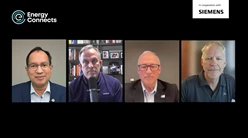AI solutions for sustainable water and waste management
In an exclusive interview with Energy Connects ahead of World Utilities Congress 2025, Jose Cheurlin, CEO - Near and Middle East at SUEZ, discusses how leveraging AI and digital can drive sustainable water and waste management globally.
- How is SUEZ contributing to the global shift toward sustainable water and waste management solutions?
The very essence of the water and waste management activities we carry out helps to preserve natural resources; it is in SUEZ’s DNA.
Our Sustainable Development strategy aims to strengthen the positive impact of our businesses, in terms of climate, preserving biodiversity and natural environments, engaging our stakeholders and contributing to local prosperity.
With operations in 40 countries and 40,000 employees, we also enable our customers – whether local authorities or industrial groups – to create value over the entire lifecycle of their assets and services, and to drive their ecological transition, together with their end-users. With 1,100 experts around the world, close to 1,700 patents, 10 research centers and an innovation drive at all levels of the company, we are committed to speeding up the major transitions by capitalising on our strengths.
- What innovative technologies and AI solutions is SUEZ implementing to improve water treatment and resource efficiency?
At SUEZ, innovation is at the heart of our activities. We use digital solutions and AI to preserve water: to prevent leaks, to improve the knowledge of networks and the quality of the water they carry and anticipate resource availability. SUEZ has developed innovative solutions based on 3 key pillars: saving water, recycling it and increasing its availability. First of all, Saving water: one of the biggest challenges for local authorities is to modernise aging infrastructures. Water distribution and wastewater treatment networks are often obsolete, putting a strain on budgets and available resources. Delaying their renewal can lead to much higher maintenance costs, not to mention the risks to water quality and continuity of service.
AI allows us to create even more value from the data collected by smart water meters and sensors in the networks. For example, with advanced modelling techniques that simulate the behavior of water networks, to better plan their management, identify areas at risk of breakage, and know where to invest at the right time to replace a pipe. With concrete results: thanks to our digital data collection and analysis solutions, we have enabled our customers to save more than 33 million m3 of water in 2024, the equivalent of nearly 8,900 Olympic swimming pools!
In Qatar, SUEZ is working for Kahramaa Qatar General Electricity and Water Corporation to detect water leaks using iDroloc, the in-house developed tool for helium gas leak detection. The second key pillar is Recycling water. At SUEZ we encourage the reuse of wastewater. The treated wastewater helps limiting the withdrawal of natural resources, providing a sustainable, reliable, controlled, and available water resource. Tertiary treatment allows recycled water quality to be reused for watering parks and gardens, agricultural irrigation, industrial uses, even recharging water tables. In Tunisia, SUEZ started last year the contract of wastewater services for the south half of the country. We will renovate the existing WWTP to allow wastewater to be used for agriculture via tertiary water treatment processes. This will contribute to ensure the water resources for the agriculture and the economic development of the region.
The last key-pillar is Increasing water availability, with groundwater management and seawater desalination. SUEZ has developed a digital tool called “Aquadvanced Water Resources” to accurately monitor the state of groundwater and the proper functioning of boreholes. We thus monitor more than 580 catchments in France, and more than 250 in the rest of the world. SUEZ also relies on the controlled recharge of aquifers to compensate for failing groundwater levels. This proactive approach allows water to be reinjected into underground reservoirs, helping to maintain their level and capacity or to limit the intrusion of seawater into the continental aquifer, as is the case in Hyères in the south of France.
Regarding desalination, more than 260 desalination plants designed and built by SUEZ, we still innovate to make its energy consumption more sustainable: energy consumption per m3 produced has been halved in 20 years. The Victoria Desalination plant in Australia has been powered at 100% by renewable energy since it was built 10 years ago.
- What are the next steps in AI at SUEZ?
In addition to the uses of AI mentioned above, generative AI is also going to take us even further, and we fully intend to exploit it for the Group’s various businesses. Our ambition is clear: to continue to innovate, to develop intelligent solutions to preserve the environment, and to prove that economic performance and ecological performance can go hand in hand.





